The diagram below shows what happens to energy as it passes through an herbivorous mammal (a wildebeest).
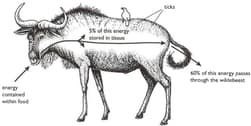
State the source of the energy in the food eaten by the wildebeest.


Important Questions on Organisms and their Environment
The diagram below shows what happens to energy as it passes through an herbivorous mammal (a wildebeest).
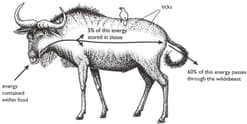
State the form in which the energy is present in the carbohydrate eaten by the wildebeest.
The diagram below shows what happens to energy as it passes through an herbivorous mammal (a wildebeest).
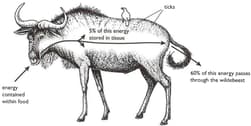
Name the process that makes the remaining of the energy in the food available to the wildebeest.
The diagram below shows what happens to energy as it passes through an herbivorous mammal (a wildebeest).
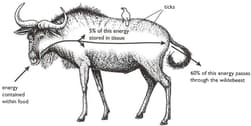
State three ways in which the energy may be used within the wildebeest.
The bird on the wildebeests back is an oxpecker that feeds both on blood-sucking parasites (ticks) living on the wildebeest, and on blood from the wildebeests wounds.
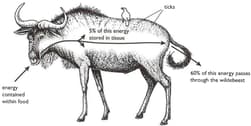
Draw a food web to show the feeding relationships of the organisms in the diagram.
The bird on the wildebeests back is an oxpecker that feeds both on blood-sucking parasites (ticks) living on the wildebeest, and on blood from the wildebeests wounds.
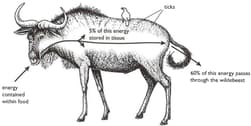
Explain why there must always be fewer oxpeckers than ticks in this food web.
The photograph below shows some root nodules from a pea plant, which is a type of legume.
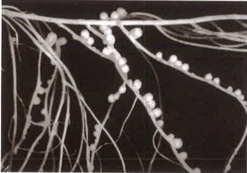
List four chemical elements that are found in proteins.
The photograph below shows some root nodules from a pea plant, which is a type of legume.

Nodules like those in the photograph develop on the roots of pea plants and other legumes when the soil is lacking in nitrate ions.
The photograph below shows some root nodules from a pea plant, which is a type of legume.

After the peas have been harvested, the plants are ploughed back into the soil. Describe what happens in the soil to convert dead plant material into nitrate ions that plants can absorb.
